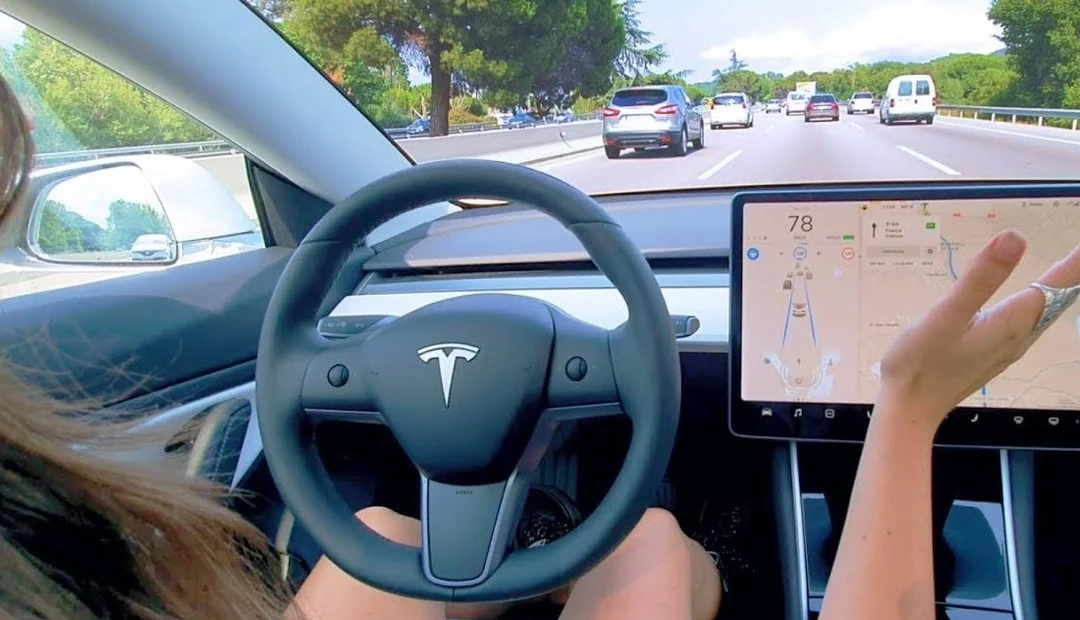It is estimated that by 2030, 20% of the vehicle fleet will have autonomy features.
Aitor Fernández Martín, President of the Spanish Association of Connected Autonomous Vehicles (AEVAC), echoes the proposal to develop a new highway based on 5G.
From their perspective, the most advanced innovation and mobility system to date would enable greater efficiency and safety in transportation.
They emphasize the importance of the involvement of a telecommunications company and cloud services provider to ensure a range of essential features for the use and control of autonomous vehicles.
In the same vein, Volvo is advancing in its commitment to autonomous electric vehicles.

The goal is clear: to electrify their entire range of models in this endeavor.
And in this process, Artificial Intelligence (AI) will play a key role, as stated by Juan Carlos Muñoz, the company’s Marketing executive.
However, the current reality is that these developments must adhere to a regulatory framework that establishes certain limits.
“Given the sensitive nature of the topic, regulations are needed for the development and safety of these technologies,” the executive points out in communication with Mobility Portal Spain.
AEVAC aims to encourage the exploration of opportunities that can emerge in the future of autonomous mobility in Spain.
Aitor Fernández Martín, President of AEVAC, also mentions that the country is gradually starting to generate projects related to autonomy, especially over the past year, thanks to private initiatives, European funding, and support from local and regional entities.
AI systems in electric vehicles must adhere to rigorous safety standards.
This is why certain regulations are required to ensure “manufacturers follow best practices in the design, development, and deployment of these autonomy systems.”
This includes testing and certifications to ensure that developments are reliable and prepared for risky situations.
Furthermore, Volvo believes that “it’s essential to have laws protecting user privacy and establishing clear requirements for data use and management.”
In the first edition of the Autonomous and Connected Vehicle Barometer presented in 2023 by the National Association of Automobile and Truck Manufacturers (ANFAC), it pointed out that car brands currently have the capability, both in the current offering and in the introduction of new vehicles, to provide levels of autonomous driving beyond SAE Level 2, which is the maximum level allowed by Spanish regulations.
To take advantage of the possibilities offered by technology today, ANFAC emphasizes the need to modify the general traffic regulations and other norms in 2023 to allow the circulation of vehicles up to SAE Level 4 on Spanish roads.
Regulations for Autonomous Vehicles Autonomy
Spain has already taken the initial step by enabling the framework for this to occur in the new Traffic, Motor Vehicle Circulation, and Road Safety Law of December 2021, but no progress has been made since then.
Neighboring countries in Europe already have a regulatory framework allowing for the circulation of automated vehicles. For instance, Germany has permitted the circulation of SAE Level 3 vehicles since 2017, and from 2021, it approved the incorporation of SAE Level 4 driving functions for defined and controlled areas within public traffic.
Similarly, while France doesn’t have specific regulations for SAE Level 3, it views it as an advanced driver assistance system and allows its implementation in vehicles.
Autonomous Accidents
Who should be held responsible in an autonomous car accident? This is the question that many users of such vehicles ask themselves when they hit the road.
The truth is that there is no answer in Spain. Currently, there is a regulatory vacuum.
Portal Movilidad España consulted with sources from the National Traffic Directorate (DGT) late last year, and the response was: “It’s under development. As of today, there’s nothing.”
There are five types of responsibilities, classified by levels. One level remains unresolved.
Depending on the autonomy, Levels 1 and 2 correspond to infractions linked to private drivers.
Levels 4 and 5 hold the manufacturer or the Autonomous Driving System (ADS) provider responsible.
Only Level 3 is excluded, which still lacks accountability for accidents if they occur.
In the market, there are increasingly more brands offering this kind of driving mode.
The globally known example is Tesla’s “autopilot.” Tesla cars come with advanced hardware capable of providing autopilot functions and full autonomous driving capabilities.
However, a mode where the vehicle drives entirely by itself doesn’t yet exist. The American brand is developing the system, and it’s currently in the beta phase.
Another brand capable of offering the hardware is Mercedes Benz.
The star brand is the only one that has declared worldwide that in the event of an accident with one of their autonomous cars, the manufacturer would take responsibility.







